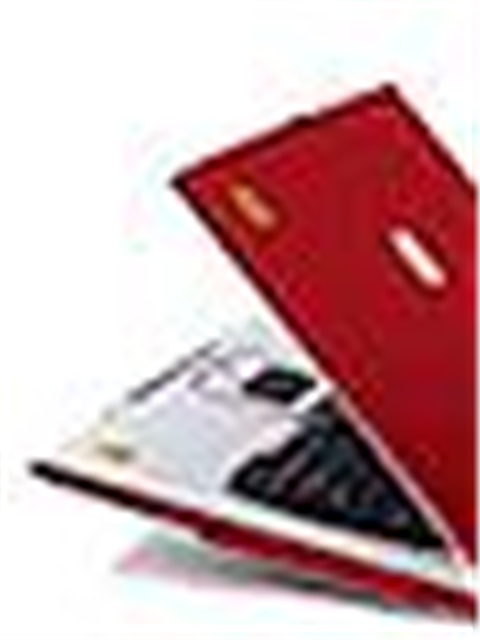Desktops have not yet gone that low, Schnell points out, as vendors prefer to come in with beefed up product instead of dropping the average box price further. What customers want is product that is easier and fun to use.
That means lighter, with better design, better screen technology and fewer cables, Schnell says.
Steve Trang, notebook product manager at Samsung, says that in the past year people have stopped selling notebooks as a standalone product.
Notebooks walk out the door as a five-ticket item, he says, which has got to be good for resellers trying to build up a profitable margin in hardware.
But Trang’s message to resellers is that the channel needs to learn how to sell the bundles as a solution rather than a set of products. "Not that it comes with a free mouse, but what does that free mouse mean for the buyer?" Trang says. "What can you do with this bundle?"
Rod Stern, managing director at Sydney reseller, box-builder and service provider PC Fever, agrees bundles and services are still the way to go. Moreover, a lot more could be done that is not yet being focused on strongly by many Australian resellers, he believes.
To keep the margin up, bundles could -- and should -- valuably include customer support in the form of lessons in basic computer maintenance and network security. The average level of user understanding and capability in such things is still low, he points out.
Other margin boosters include data backup and recovery offerings, repairs, power protection and insurance. Many of these Stern already offers at PC Fever -- in fact, his company is moving more and more towards quality service provision. "We do repair notebooks. A lot of people who sell stuff can’t repair it and don’t know where to send it for repairs and [because we do repairs we] get people happy again," Stern says.
As notebook prices keep falling, they’ll keep getting cheaper as a unit. Yet repairs for, say, a dead graphics card can mean another $1000 or more. On a $2000 or $3000 mid-range notebook, that’s significant.
Insurance can help solve the problem, but few users are insured or aware how much it might cost to fix their notebook once the warranty expires, Stern says.
Few mid-range notebooks have more than a 12-month warranty. And many are not tough enough to handle the bumps of everyday existence. Resellers might want to think about making sure customers know what their options are, he suggests. "Notebooks are the way of the future," Stern says. "But $1300 or $1400 notebooks are toys."
The mid-range is where the real business functionality comes in. DVD writers are now almost ubiquitous, as are 512MB of RAM, 15-inch screens and 60GB of hard drive. But although customers expect everything at that price, they mostly can’t yet get widescreen, Stern says.
Sales are up, analysts agree. Gartner’s rival IDC has noted that overall notebook sales are still increasing. Michael Sager, PC hardware market analyst at IDC, says in a recent report that consumer notebook sales were still going up in the fourth quarter of 2004.
"The notebook PC market saw a solid increase of 9 percent sequentially and a rise of 41 percent compared to the same period in 2003," Sager writes.
The "mobile form factor", he argues, is increasingly accepted. But the market dynamics have changed.
Twenty-three percent more consumer notebooks were sold in the fourth quarter -- up 110 percent on the same quarter in 2003. "IDC sees the decreasing prices and beefed up specs converting purchases away from the desktop form factor. Additionally, the huge rise in digital content and wireless networks in the home are two major factors," Sager says.
The fourth quarter saw 75 percent of notebooks sold with embedded WLAN, 140 percent up on the year-ago quarter. Widescreen notebook sales have doubled in the past three quarters too, he says.
"IDC expects this number to increase as the cost of manufacturing widescreen LCDs continues to decline and as consumer interest in multimedia rises," Sager writes.
He says consumer notebooks are leading -- so Toshiba is in front. Toshiba grew its market share some six points from the third quarter. Perhaps especially heartening for the channel, though, is that direct selling giant Dell lost the most market share of any top six vendor in the final quarter.
Toshiba has 23.5 percent market share, HP 17 percent, Dell 15.7 percent and Acer 12.3 percent. IBM, with 8.5 percent, and Apple, with 5.1 percent, came in at fifth and sixth place respectively.
"One in every three consumer notebooks sold was a Toshiba. HP also saw growth as it gained back its second place position from Dell," Sager says. "Rounding out the top six were Acer, IBM and Apple, who each lost varying amounts of share."
The fourth quarter saw a ‘massive’ amount of notebooks fall below $2000, further boosting the market overall, he added.





_(11).jpg&h=142&w=230&c=1&s=1)




.jpg&w=100&c=1&s=0)
_(8).jpg&w=100&c=1&s=0)







.jpg&q=95&h=298&w=480&c=1&s=1)





